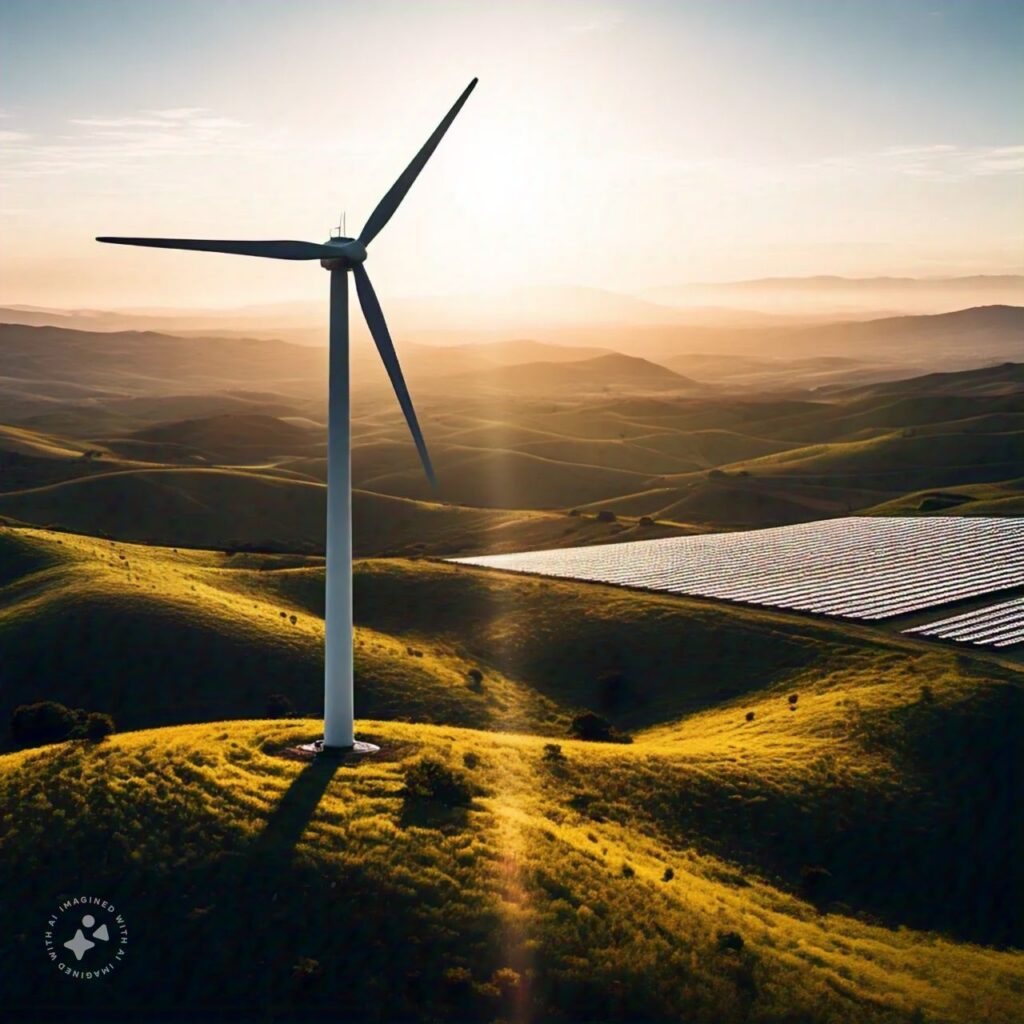Understanding Renewable Energy
Renewable energy refers to energy derived from natural processes that are replenished at a rate faster than they are consumed. This form of energy is essential as it offers sustainable alternatives to fossil fuels, which are finite and contribute significantly to environmental degradation. The most common types of renewable energy include solar, wind, hydro, and biomass, each harnessing different natural phenomena to generate power.
Solar energy is produced by capturing sunlight through photovoltaic panels or solar thermal systems. These technologies convert the sunlight into electricity or heat, providing a clean energy source that can be utilized in homes and industries alike. Wind energy, on the other hand, is generated through the use of wind turbines that convert the kinetic energy of moving air into mechanical power, which can then be transformed into electricity.
Hydropower is another significant form of renewable energy, leveraging the gravitational force of flowing water, often through dams, to generate electricity. The flowing water spins turbines which, in turn, produce power. Additionally, biomass energy uses organic materials, such as plant and animal waste, to create heat, electricity, or biofuels. This process not only generates energy but also contributes to waste reduction, making it a sustainable choice.
The importance of these renewable energy sources cannot be overstated, especially in the context of global climate change. By utilizing resources that are replenished naturally, we can reduce our reliance on fossil fuels and decrease greenhouse gas emissions. The principles behind each type of renewable energy highlight how innovative technologies can harness natural phenomena, paving the way for a sustainable energy future. As we deepen our understanding of these energy sources, it becomes clear that they are fundamental to achieving long-term energy goals while protecting the environment.
Challenges in Renewable Energy Implementation
The implementation of renewable energy solutions, while promising, presents several challenges that must be addressed to fully realize their potential. One of the primary obstacles is the intermittency of energy supply. Renewable sources, such as solar and wind, are not consistently available. The sun does not always shine, and the wind does not always blow, leading to fluctuations in energy production. This unpredictability can complicate energy management and grid stability, making it necessary to develop effective strategies for integration with traditional power sources.
Another critical issue lies in storage technology limitations. Currently, the technology to store large amounts of energy efficiently is still in development. Batteries and other storage systems are essential for balancing supply and demand, especially during periods of low generation from renewable sources. However, existing storage solutions often involve high costs and insufficient capacity to meet large-scale energy needs. Investment in advanced storage technologies is necessary to enhance the reliability of energy derived from renewable sources.
High initial costs associated with renewable energy projects represent yet another barrier to implementation. Though the long-term benefits and savings from renewable energy are well-documented, the upfront financial investment can deter stakeholders from committing to such projects. Additionally, the transition from fossil fuels to renewable energy often requires substantial investments in new infrastructure. Upgrading grid systems to accommodate decentralized energy production is crucial for realizing the full benefits of renewable energy technologies.
Moreover, addressing these challenges involves examining the economic, environmental, and social implications that come with transitioning to a renewable energy framework. Stakeholders must navigate concerns related to job displacement, equity in energy access, and the environmental costs of manufacturing technologies. Only by overcoming these challenges can we move towards a sustainable energy future that benefits society as a whole.

Innovations Driving Renewable Energy Forward
The field of renewable energy is witnessing a remarkable transformation due to significant innovations across various technologies. One of the most notable advancements is in solar panel efficiency. Today’s solar panels incorporate bifacial technology, which allows them to capture sunlight from both sides, thereby increasing energy production without requiring additional space. Companies like First Solar have introduced cadmium telluride solar modules that not only enhance efficiency but also reduce manufacturing costs, making solar energy more accessible and competitive in the global energy market.
Similarly, wind energy has seen major improvements, especially with the development of larger and more efficient turbines. The latest designs utilize advanced materials and aerodynamics to optimize performance in lower wind conditions, thus expanding the viability of wind sites. For instance, GE Renewable Energy’s Haliade-X turbine boasts a capacity of 13 MW and is designed for deeper waters, showcasing the potential of offshore wind farms in harnessing energy from vast areas previously deemed unsuitable.
Other
Energy storage solutions are also critical to addressing the intermittent nature of renewable sources. Breakthroughs in battery technology, such as the development of solid-state and flow batteries, are paving the way for longer-lasting and safer energy storage. Companies like Tesla are at the forefront of this innovation, with their battery systems enabling consumers and businesses to store solar energy generated during sunny periods for use at night. Furthermore, when coupled with smart grid technology, these storage solutions enhance energy distribution and grid reliability, ultimately optimizing energy usage.
Real-world applications demonstrate the effectiveness of these innovations. The Hornsea One offshore wind farm in the UK, for example, showcases how the integration of advanced turbines and smart grid technology can produce energy for over a million homes. As these innovations continue to evolve, they address the historical challenges faced by renewable energy, making it a more efficient, reliable, and credible source of power for the future.
The Future of Renewable Energy
The future of renewable energy is poised for significant transformations, influenced by emerging trends, technological advancements, and shifts in public policy. As global awareness around the impacts of climate change continues to grow, there is a corresponding recognition of the necessity for alternative energy solutions. In the coming years, we can expect an increase in investments directed towards renewable energy projects, spurred by both governmental initiatives and private sector involvement. This influx of funding will likely result in accelerated research and development, pushing the boundaries of existing technologies and potentially leading to breakthrough innovations in energy generation and storage.
Policy changes will play a pivotal role in shaping the future landscape of renewable energy. Governments are increasingly adopting more robust regulations and incentives aimed at reducing carbon emissions and promoting sustainable practices. These measures can include tax incentives for solar panel installations, subsidies for wind energy farms, and stricter emissions standards for traditional energy sources. Such policies not only foster a favorable environment for renewable projects but also create a sense of urgency among businesses and consumers to transition towards cleaner energy options.
Public awareness and education about renewable energy are equally essential for future success. As communities become more informed about the benefits of sustainability, there is a growing demand for renewable energy sources that can reduce reliance on fossil fuels. This cultural shift can motivate individuals and organizations to take action, from advocating for cleaner policies to implementing energy-efficient practices in their daily lives. The collective efforts of individuals, communities, and governments are crucial in fostering a sustainable energy future, ensuring that the transition to renewable energy becomes a shared priority across all sectors of society.
Conclusion
In conclusion, the future of renewable energy holds immense potential, driven by increased investment, supportive policies, and heightened public awareness. By considering their impact and advocating for sustainable practices, individuals can contribute to this positive trajectory towards a cleaner and more sustainable energy landscape.
Read Our Latest Blog
How to Choose the Right Career Path After Class 12
Phone Number: +91-7488456170
Email ID: abhishek@eepl.me
Our Platforms:
Digilearn Cloud
EEPL Test
Live Emancipation
Follow Us on Social Media:
Instagram – EEPL Classroom
Facebook – EEPL Classroom
Stay connected and keep learning with EEPL Classroom!











